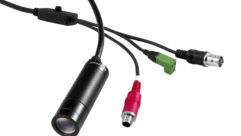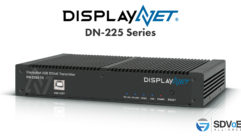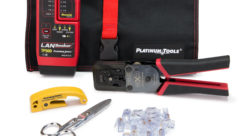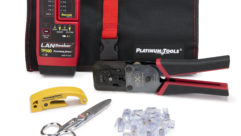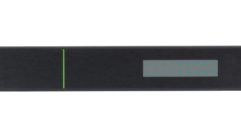Twisted-pair Cable
Jul 3, 2013 12:40 PM,
By Chris Kopin, CTS, ISF-C, VP of technology, Kramer Electronics USA
Is it time to move to shielded category cable?
Transporting video, audio, and control signals over twisted pair (category) wire has become an integral part of any AV installation. Back in the day, manufacturers of category wire extenders bragged about the distances they’d achieved with low-resolution and medium-resolution display signals such as XGA (1024×768) in the RGBHV format.
Today, we’ve blown past XGA, transitioning from analog to digital in the process, and are routinely using HD and wide UXGA displays with two million pixels or more. Our bandwidth requirements have increased exponentially with higher clock rates. We’re also pushing multi-channel digital audio through the same cables, along with serial control interfaces and Ethernet connections. Welcome to the new world of dense, high-speed digital interfaces!
Twisted-pair cable, by design, does an excellent job of eliminating common-mode noise, such as that created from ground loops. But it is still susceptible to impulse noise and radio frequency interference (RFI). In addition, crosstalk can occur between different twisted pairs or across cables that are in close proximity.
The best way to protect against impulse noise and RFI is to use shielded twisted-pair (STP) category wire, which comes in two forms. The first contains four pairs of unshielded wire, but provides an outer shield that can be securely grounded at either end of the cable run. The second uses individual shielded twisted pairs and may or may not have an outer shield, as well. The use of individual shielded twisted pairs also helps to suppress crosstalk within the cable and from adjacent cables.
Empirical evidence shows that structured wire systems carrying dense, high-speed digital AV signals such as HDMI perform much more reliably over longer distances when grounded STP cable is used. HDMI and control signals that could barely make it to 40ft. with UTP cable can travel as far as 230ft. over STP cable with soldered ground (drain) leads at each end.
The fast-growing HDBaseT signal-multiplexing format (video, audio, RS-232, IR, and Ethernet) was originally designed to work with Category 5e UTP cable. Now, manufacturers are learning that STP is a better choice and in fact moving up to Category 6 wiring provides even better results.
Is it time for our industry to move to shielded category cables? Absolutely! Clock rates and signal density will only increase over time as we adopt higher resolutions and try to pack more video, audio, and control signals into one wire.
Given that commercial AV installations often have more unknowns than residential installations with regard to EMI, crosstalk, and impulse noise, it should be an AV best practice to consistently specify and use STP cable for all category wire extender applications.
And while you may be impressed with just how many signals can be stuffed into a single unshielded category wire at a tradeshow demo, that doesn’t mean it’s a good idea in practice. Just because it can be done doesn’t mean it should be done.


